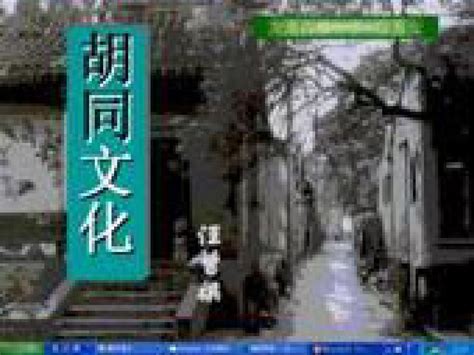胡同英文
Exploring the Meaning of "胡同" in English
In English, the term "胡同" is often translated as "hutong." A hutong refers to a type of narrow street or alley commonly found in traditional Chinese neighborhoods, especially in Beijing. These alleys are typically lined with traditional courtyard residences known as siheyuan.
Historical Context:
Origin:
The word "hutong" originated during the Yuan Dynasty (1271–1368) and became prevalent during the Ming (1368–1644) and Qing (1644–1912) dynasties.
Layout:
Hutongs are arranged in a gridlike pattern, forming a network of interconnected lanes. They provide a glimpse into the traditional urban layout of Chinese cities.
Community Life:
Hutongs are not merely thoroughfares but also hubs of communal activity, where neighbors interact, children play, and local businesses thrive.Architectural Features:
Siheyuan:
The dominant architectural feature of hutongs is the siheyuan, a courtyard surrounded by buildings on all four sides.
Compact Design:
Siheyuan are typically compact in size, with rooms arranged around the courtyard. This layout maximizes space utilization in densely populated areas.
Traditional Elements:
Hutong architecture often incorporates traditional Chinese architectural elements such as tiled roofs, carved wooden doors, and courtyard gardens.Cultural Significance:
Social Fabric:
Hutongs serve as the backdrop for everyday life in traditional Chinese communities. They foster a strong sense of community and social cohesion among residents.
Cultural Heritage:
Hutongs embody China's rich cultural heritage and architectural legacy. They offer valuable insights into the country's urban history and development.
Tourist Attractions:
In recent years, hutongs have attracted tourists seeking an authentic glimpse of traditional Chinese life. Many hutongs have been preserved and renovated to accommodate visitors.
Preservation Efforts:
Challenges:
Despite their cultural significance, hutongs face threats from urbanization, modernization, and redevelopment projects. Many have been demolished to make way for highrise buildings and modern infrastructure.
Preservation Initiatives:
Recognizing the importance of preserving hutongs, government agencies and preservation organizations have launched initiatives to protect and restore these historic neighborhoods.
Adaptive Reuse:
Some hutongs have been adaptively reused, with old siheyuan transformed into boutique hotels, cafes, art galleries, and cultural centers. These initiatives help breathe new life into traditional neighborhoods while preserving their historical character.Conclusion:
In conclusion, the term "hutong" encapsulates not just the physical layout of narrow alleys and courtyard residences but also the rich cultural heritage and communal spirit of traditional Chinese neighborhoods. By preserving and celebrating hutongs, we can honor China's past while shaping its future in a way that respects its architectural legacy and fosters vibrant, inclusive communities.
本文 新鼎系統网 原创,转载保留链接!网址:https://acs-product.com/post/8576.html
免责声明:本网站部分内容由用户自行上传,若侵犯了您的权益,请联系我们处理,谢谢!联系QQ:2760375052 版权所有:新鼎系統网沪ICP备2023024866号-15








